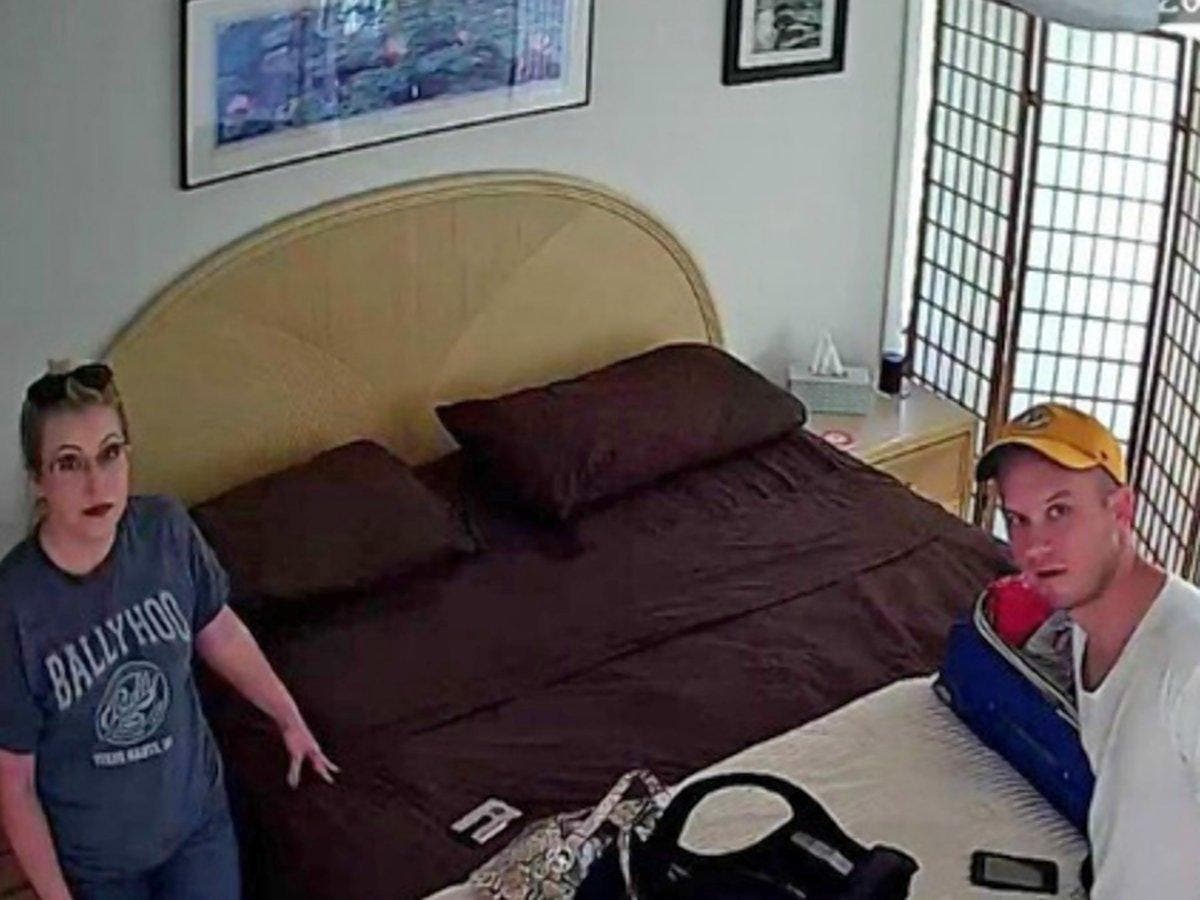How to spot hidden cameras in Airbnb rentals
The rise of home rental services such as Airbnb has quickly changed the way we vacation – but there’s a potential dark side too.
Several stories of vacationers finding hidden cameras in rental properties have raised questions about the safety of staying in a stranger’s home in recent years.
In 2017, Jason Scott tweeted a photo from a camera hidden inside a motion detector his unnamed colleague discovered in an Airbnb apartment.
“In the news” oh it’s a thing now “one of my colleagues thought it strange that there was only one” motion sensor “in his Airbnb in the bedroom and voila, it’s a web-connected IP camera,” he tweeted. “(He left at 3am, reported, host suspended, colleague refunded.)”
Airbnb said in a statement at the time that the host in question had been permanently banned and was “supporting our guests with a full refund and reimbursement of expenses incurred.”
The issue resurfaced after a British TikTok user, describing himself as an “ex-hacker”, shared his tips for spotting hidden cameras in Airbnbs in a video that quickly went viral.
In a clip that has been viewed more than five million times, Marcus Hutchins, who teaches cybersecurity, recommends shining a torch around the room when you arrive to check for possible recording devices and paying attention to obvious places where a camera could be positioned.
“Take this fire alarm for example, it’s placed right above the bed,” he says.
“Now one way to see if the device is a camera is to shine a bright light on it. If you hit a camera lens, you’ll get a bluish reflection. You can test this by shining a light on your phone and seeing what the camera looks like when placed under a flashlight.
So should we all check the cameras in our vacation rentals now? And if yes, how ?
“You have to be alert to the likelihood of a possibility,” Keith Roberts, a technician for Advanced scanninga company that detects bugs for individuals and businesses, tells The Independent. “There are wicked people in the world.”
He says the number of hidden cameras discovered by Advanced Sweeping has increased over the past few years.
“Cameras and eavesdropping devices are much more common these days. Before, there was a limited market and you had to know someone to find one. They’re much easier to buy now – anyone can buy them commercially on Amazon or eBay.
Although Roberts suggests hiring a professional company to check if you want to be completely sure you’re not recorded, there are some things a layman can do to check cameras.
Look around you
“With cameras, you have to look for the little holes, where the lens will be,” Roberts says. “Check common objects: book spines, mirrors, light bulbs, indoor plants. Look in logical places; if someone was looking for information, they would put a device in the living room. If the person was a voyeur, she would probably place a camera in dressing areas like the bathroom, shower room, and bedroom.
“Check places that would provide the best field of view and are not likely to be obstructed – often a camera would be high up, so whoever is filming will gain as much as possible.”
shine a torch
You don’t need to be Inspector Gadget to do a solid sweep for the cameras – a humble torch, like the one on your smartphone, will do. “You can search for a lens with a torch and it’s 92 or 95 percent accurate,” says Roberts. “Turn off all the lights and shine a torch slowly into every inch of the room – all camera lenses will reflect the light.”
Check the mirror
Are you worried that the mirror is two-way? There is a very easy way to check. “The fingernail test is old but it still works,” Roberts says. “Put a fingernail against the glass. In a real mirror, you cannot reach your finger into the reflection. But if you can touch your own finger in the reflection, that’s a problem. This is a strong indication that it is a one-way mirror.
Invest in a detector
While companies like Advanced Sweeping spend hundreds of thousands of pounds on professional appliance detectors, it is possible to buy cheaper versions. Roberts says: “There are professional lens hunters you can buy – the cheapest cost between £40 and £50. For real peace of mind, it might be worth the investment.
Search webcams
There are two main types of surveillance cameras: those that record to an SD card and those that are connected to the Internet. You can search for webcams by connecting to the host’s Wi-Fi and using a free network scanner to find all cameras connected to the Internet. In response to Jason Scott’s latest spy camera story, Dr Adam Glen tweeted: “Most web hosts usually allow you to access their local network via wifi. Use @fingapp to scan the network for IP cameras. Not full proof [sic] method of detection, but can give an indication.
If you find anything wrong (taking into account that the host may have legitimate security cameras outside the premises), unplug the internet router to ensure you are not being monitored.
Finally, if you find what you think is a hidden camera, don’t just complain to the company you booked through – report it to the police.


Comments are closed.